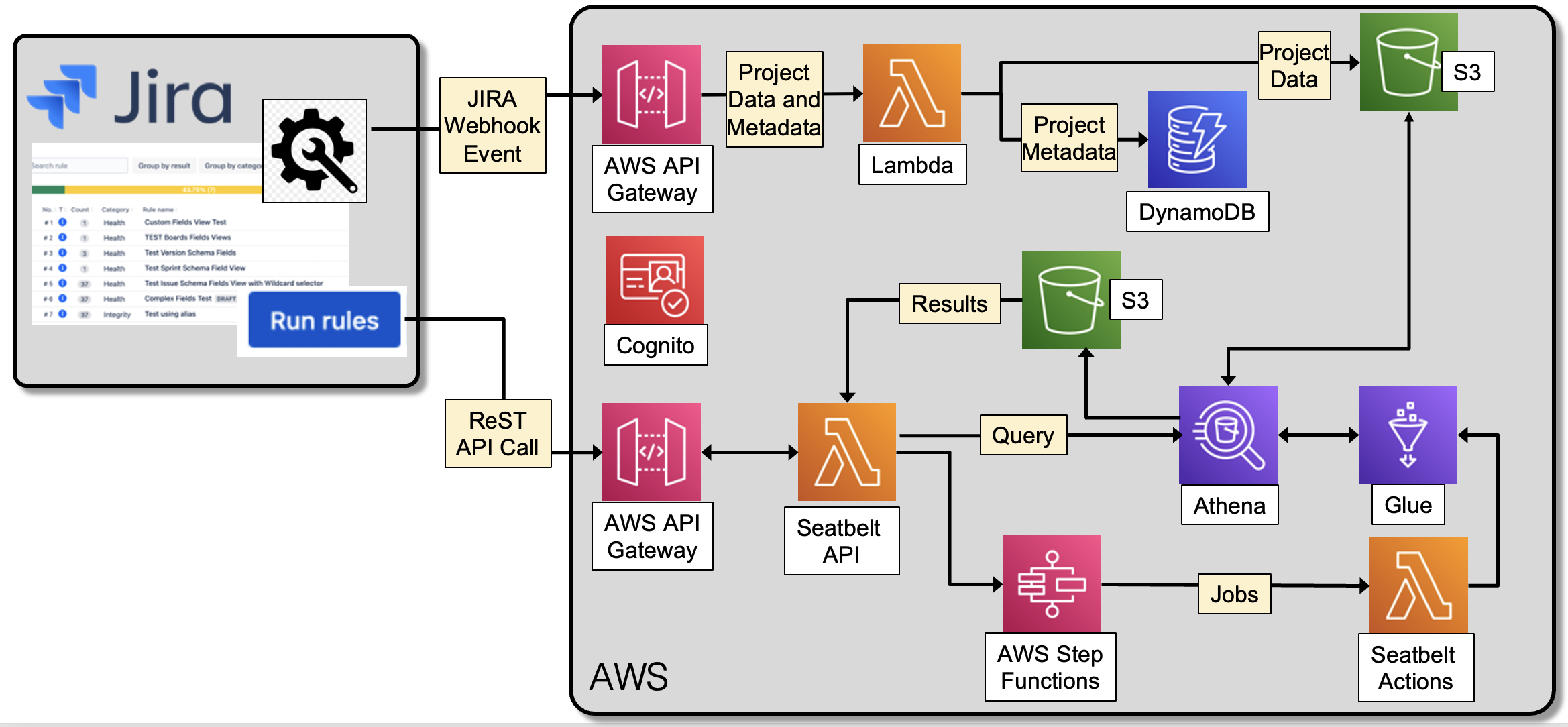# Introduction
Learn how to stay agile with Seatbelt for Jira.
Seatbelt for Jira (opens new window) improves the predictability and visibility of software development by improving the quality of data that is used to make critical decisions. Seatbelt for Jira enables Jira users to create and enforce a set of business rules that automatically flag late, inaccurate or incomplete data within Jira. By running Seatbelt on a regular basis, teams can quickly identify and fix anomalies in their project data, so they can focus on providing more value to their customers. Business rules are expressed in terms of SQL statements that operate on Jira information such as boards, issues, sprints, projects, and releases, and which fail if they return any rows. They succeed if no rows are returned.
# Features
- Improve your projects for better reporting and better business decisions
- Enforce data integrity, increase compliance, and improve accuracy
- Use pre-built rules, customize, or create your own
- Rules can reference data from projects, issues, sprints, releases, users, groups, and agile boards, as well as components and labels
- Classify rules as data integrity, policies, or project health, and errors vs warnings
- Disable any rule temporarily, for example if it is still being developed, results in "noise" due to known issues, or is not yet appropriate to run for any reason
- Build complex queries using PrestoDB to obtain data beyond what you can get with JQL alone
# Benefits
1. Quickly identify data integrity violations
Data integrity issues occur when a Jira project is in an incorrect state due to incorrect, out-of-date, incomplete, or missing data. Data integrity issues can cause serious anomalies in project reporting and overall project progress. For example, sometimes an issue that is assigned to a particular release may be left in an incomplete or unstarted state, long after the release is closed and deployed to production. Seatbelt detects this situation, enabling the issue to be addressed appropriately. Seatbelt never automatically fixes issues because there are multiple possible fixes. For example, in this case the issue may have actually been completed (and simply requires an update), or may have been abandoned or descoped (and should be returned to the backlog).
2. Enforce your organization policies
In addition to data integrity, Seatbelt enables organizations to enforce specific policies in Jira by codifying them in rules. This can be used, for example, to ensure that all user stories contain a "so that" construct, all bugs contain "steps to reproduce", enforce that certain fields are filled in based on the state of other fields, and many other requirements. By enforcing policies using Seatbelt, we remove the need for people to "check on" the work of others (which can be uncomfortable or cause strife within a team). It helps to ensure that everyone is on the same page and working together efficiently. It helps to avoid duplicated work and wasted effort. And finally, it helps to keep your project data organized and accessible.
3. Go beyond advanced JQL issue search
Jira's JQL is great for issue searches, but there are definite limitations to what it can do. That's where Seatbelt comes in. Using PrestoDB, Seatbelt allows users to query data beyond what's available through advanced issue search. So if you're looking for something specific and JQL just isn't cutting it, Seatbelt is definitely worth checking out. Check out the examples in the template rules and docuemntation. Got something even more complex? Get in touch with us! We love a challenge
# Concept of Operation
Seatbelt works by listing a number of rules that can be applied to a given Jira project. An authorized user can execute the rules at anytime. After the rules are executed, any rules that identified violations (in the case of errors or warnings) or informational results are identified. In order to investigate the failures or warnings, simply click on the rule. Each item that violates the rule will be listed. All relevant information is listed, enabling the user to identify the problem so they can fix it. In most cases, the ID number is underlined, indicating that it is a link enabling the user to navigate into the details for making the required updates.
The cloud-based architecture of Seatbelt is illustrated below. Seatbelt leverages Amazon Web Services components including Athena/Presto in order to invoke the rules. Data is encrypted during transit and while rules are invoked.
